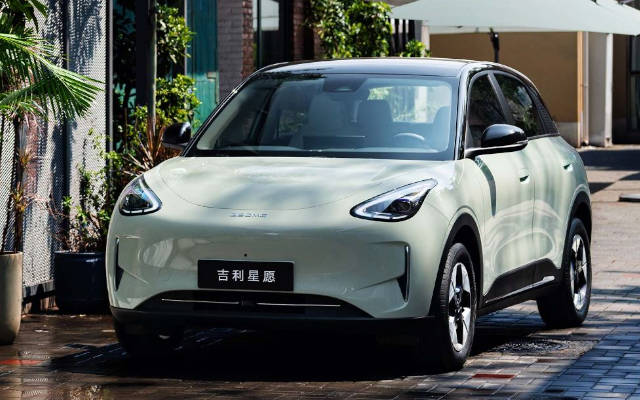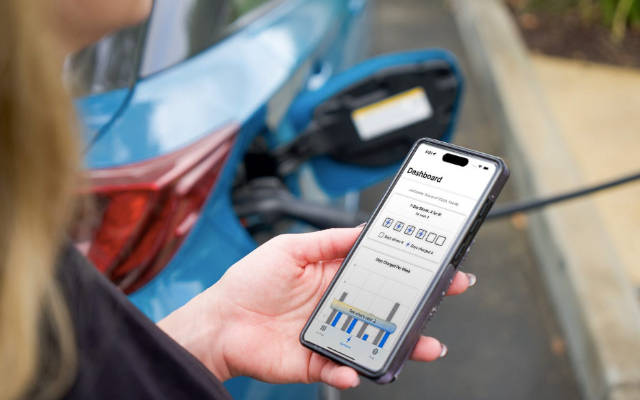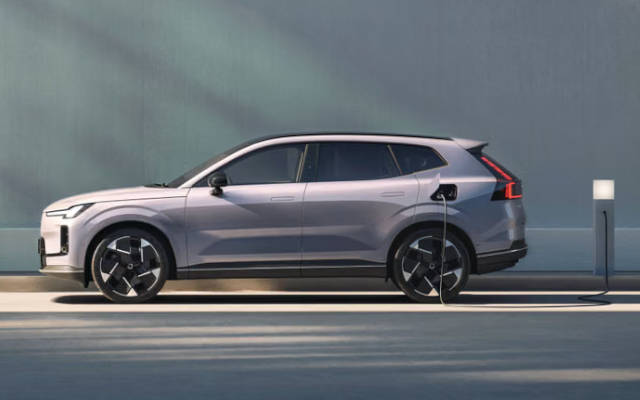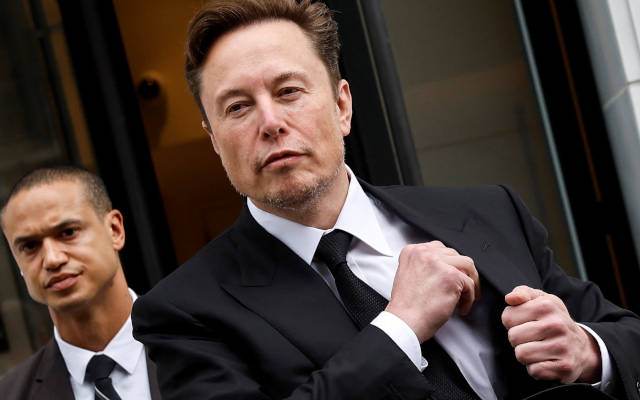 EDITOR'S PICK
EDITOR'S PICK
The EV You've Never Heard Of That Outsold Tesla
18 Sep 2025 | Synopsis
 Geely's Geome Xingyuan, a compact EV hatchback priced under $10,000, became China's top-selling car in H1 2025, outselling Tesla's Model Y and BYD's Seagull. Its name means "Prosperous origin," fitting for a vehicle reshaping mass-market electrification. With 204,940 units sold, the Xingyuan thrives on affordability, urban design, and domestic loyalty. Though unknown in the West, it signals China's growing influence in global EV strategy and the rise of scalable, low-cost platforms.
Geely's Geome Xingyuan, a compact EV hatchback priced under $10,000, became China's top-selling car in H1 2025, outselling Tesla's Model Y and BYD's Seagull. Its name means "Prosperous origin," fitting for a vehicle reshaping mass-market electrification. With 204,940 units sold, the Xingyuan thrives on affordability, urban design, and domestic loyalty. Though unknown in the West, it signals China's growing influence in global EV strategy and the rise of scalable, low-cost platforms.Toyota Built An App To Hack Plug-In Hybrid Owners' Brains And Make Them Actually Charge Their Cars
17 Sep 2025 | Synopsis
 Toyota developed the ChargeMinder app to encourage plug-in hybrid owners to charge their vehicles more consistently. Using behavioral science techniques like personalized reminders, gamification, and educational quizzes, the app increased user satisfaction and improved charging habits. In Japan, it boosted peak renewable charging by 59%, while U.S. trials saw a 10% rise in charging frequency and a 16-point jump in satisfaction.
Toyota developed the ChargeMinder app to encourage plug-in hybrid owners to charge their vehicles more consistently. Using behavioral science techniques like personalized reminders, gamification, and educational quizzes, the app increased user satisfaction and improved charging habits. In Japan, it boosted peak renewable charging by 59%, while U.S. trials saw a 10% rise in charging frequency and a 16-point jump in satisfaction.Volvo XC70 PHEV: A Battery-First Hybrid That Redefines the Segment
17 Sep 2025 | Synopsis
 Volvo's XC70 PHEV redefines plug-in hybrids with up to 200 km (124 mi) of EV range from a 39.6 kWh NMC battery, plus fast charging and bi-directional power. Its P1–P3 drivetrain pairs a 1.5L turbo engine with dual motors for seamless series-parallel operation. Built on Volvo's SMA platform, it launches first in China, with Europe expected next. The XC70 signals a battery-first strategy bridging hybrid autonomy and full electrification.
Volvo's XC70 PHEV redefines plug-in hybrids with up to 200 km (124 mi) of EV range from a 39.6 kWh NMC battery, plus fast charging and bi-directional power. Its P1–P3 drivetrain pairs a 1.5L turbo engine with dual motors for seamless series-parallel operation. Built on Volvo's SMA platform, it launches first in China, with Europe expected next. The XC70 signals a battery-first strategy bridging hybrid autonomy and full electrification.Where’d the Billion Come From? Musk's Tesla Buy Raises Questions
17 Sep 2025 | Synopsis
 Elon Musk's $1B Tesla stock purchase, made via his personal trust, sparked a surge in share price and raised questions about how the buy was funded. Likely financed through margin loans, derivatives, or asset reallocation, the move increased Musk's net worth by up to $8.6B. The timing aligns with Tesla's proposed $1T compensation plan, suggesting a strategic gesture to boost investor confidence and governance optics.
Elon Musk's $1B Tesla stock purchase, made via his personal trust, sparked a surge in share price and raised questions about how the buy was funded. Likely financed through margin loans, derivatives, or asset reallocation, the move increased Musk's net worth by up to $8.6B. The timing aligns with Tesla's proposed $1T compensation plan, suggesting a strategic gesture to boost investor confidence and governance optics. Extreme H: Hydrogen Racing's Bold New Frontier
17 Sep 2025 | Synopsis
 Extreme H is the world's first hydrogen-powered off-road racing series, debuting in Qiddiya City, Saudi Arabia. Evolving from Extreme E, it features gender-equal teams, zero-emission Pioneer 25 SUVs, and green hydrogen supplied via electrolysis. The rugged desert course tests fuel cell performance on gradients up to 130%. Backed by Saudi Vision 2030, the series aims to prove hydrogen's viability and promote sustainable motorsport innovation.
Extreme H is the world's first hydrogen-powered off-road racing series, debuting in Qiddiya City, Saudi Arabia. Evolving from Extreme E, it features gender-equal teams, zero-emission Pioneer 25 SUVs, and green hydrogen supplied via electrolysis. The rugged desert course tests fuel cell performance on gradients up to 130%. Backed by Saudi Vision 2030, the series aims to prove hydrogen's viability and promote sustainable motorsport innovation.
 EVWorld Exclusive
EVWorld Exclusive
Creative Destruction vs. Fossil Retrenchment: Why Project 2025 Risks Leaving America Behind
16 Oct 2025 |  Project 2025 protects fossil fuel incumbents by dismantling Biden-era clean energy policies. Nobel economist Philippe Aghion argues that climate progress depends on creative destruction - letting green innovators outcompete legacy polluters. The U.S. risks falling behind as global markets embrace clean tech. Even its passport has slipped from the top 10. Innovation, not retrenchment, is the path forward
Project 2025 protects fossil fuel incumbents by dismantling Biden-era clean energy policies. Nobel economist Philippe Aghion argues that climate progress depends on creative destruction - letting green innovators outcompete legacy polluters. The U.S. risks falling behind as global markets embrace clean tech. Even its passport has slipped from the top 10. Innovation, not retrenchment, is the path forward
Buick Electra E5: China-Built EV Poised for U.S. Launch
16 Oct 2025 |  Buick's Electra E5, built in China by SAIC-GM, is set to become GM's first imported EV for the U.S. market. Though its launch was delayed indefinitely in 2024, a tentative 2026 rollout remains part of GM's electrification roadmap. With Ultium battery tech, strong performance specs, and positive reception in China, the Electra E5 represents a strategic shift in global EV sourcing and branding.
Buick's Electra E5, built in China by SAIC-GM, is set to become GM's first imported EV for the U.S. market. Though its launch was delayed indefinitely in 2024, a tentative 2026 rollout remains part of GM's electrification roadmap. With Ultium battery tech, strong performance specs, and positive reception in China, the Electra E5 represents a strategic shift in global EV sourcing and branding.
China's EV Boom Masks a Hidden Inventory Problem
15 Oct 2025 |  China's EV market shows strong wholesale growth, but retail sales lag behind. In April 2025, the wholesale-retail ratio hit 1.27:1, signaling inventory buildup. Automakers push stock to dealers to meet targets, risking oversupply. Analysts warn this gap could lead to price wars and financial strain. Retail data offers a clearer view of consumer demand and market health.
China's EV market shows strong wholesale growth, but retail sales lag behind. In April 2025, the wholesale-retail ratio hit 1.27:1, signaling inventory buildup. Automakers push stock to dealers to meet targets, risking oversupply. Analysts warn this gap could lead to price wars and financial strain. Retail data offers a clearer view of consumer demand and market health.
Putting Children First: Lessons from Paris for Atlanta
15 Oct 2025 |  Paris redesigned its streets with children in mind - wider sidewalks, less traffic, and safer zones near schools. This child-first approach improved mobility for all, including seniors and cyclists. Atlanta can learn from Paris by investing in protected bike lanes, rethinking zoning, and prioritizing equity. A city where children thrive is safer, healthier, and more connected. The shift is not just practical - it's a moral imperative.
Paris redesigned its streets with children in mind - wider sidewalks, less traffic, and safer zones near schools. This child-first approach improved mobility for all, including seniors and cyclists. Atlanta can learn from Paris by investing in protected bike lanes, rethinking zoning, and prioritizing equity. A city where children thrive is safer, healthier, and more connected. The shift is not just practical - it's a moral imperative.
Micromobility's Insurance Gap: What Riders Need to Know
15 Oct 2025 |  Micromobility use is surging, but insurance coverage lags. Most auto and home policies exclude e-bikes and scooters, leaving riders exposed. Accidents are rising, and shared services often don't cover users. InsurTech firms offer on-demand solutions, but adoption is low. Riders should check existing coverage, consider standalone policies, and push for clearer regulations to close the gap and ensure safe, sustainable urban transport.
Micromobility use is surging, but insurance coverage lags. Most auto and home policies exclude e-bikes and scooters, leaving riders exposed. Accidents are rising, and shared services often don't cover users. InsurTech firms offer on-demand solutions, but adoption is low. Riders should check existing coverage, consider standalone policies, and push for clearer regulations to close the gap and ensure safe, sustainable urban transport.
SEARCH RSSTREAM
 41 New Postings In Past 24 Hours
41 New Postings In Past 24 Hours
Category:energy
Region:AsiaPacific
Date:16 Oct 2025
Category:mobility
Region:NoAmerica
Date:16 Oct 2025
Category:energy
Region:NoAmerica
Date:16 Oct 2025
Category:mobility
Region:NoAmerica
Date:16 Oct 2025
Category:mobility
Region:Europe
Date:16 Oct 2025
Category:autonomy
Region:NoAmerica
Date:16 Oct 2025
Category:energy
Region:AsiaPacific
Date:16 Oct 2025
Category:mobility
Region:NoAmerica
Date:16 Oct 2025
Category:mobility
Region:AsiaPacific
Date:16 Oct 2025
Category:mobility
Region:AsiaPacific
Date:16 Oct 2025
Category:energy
Region:Global
Date:16 Oct 2025
Category:mobility
Region:NoAmerica
Date:16 Oct 2025
Category:policy
Region:Global
Date:16 Oct 2025
Category:mobility
Region:AsiaPacific
Date:16 Oct 2025
Category:mobility
Region:NoAmerica
Date:16 Oct 2025
Category:policy
Region:NoAmerica
Date:16 Oct 2025
Category:policy
Region:NoAmerica
Date:16 Oct 2025
Category:energy
Region:NoAmerica
Date:16 Oct 2025
Category:energy
Region:Europe
Date:16 Oct 2025
Category:energy
Region:AsiaPacific
Date:16 Oct 2025
